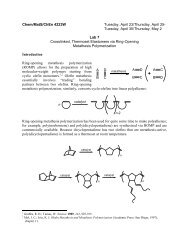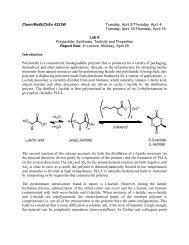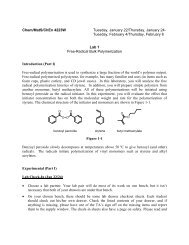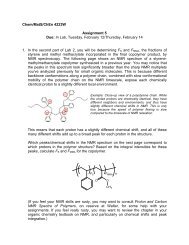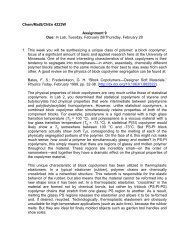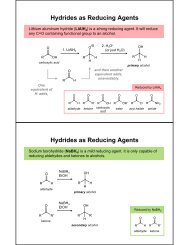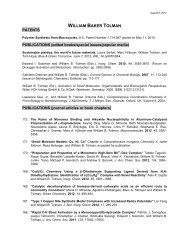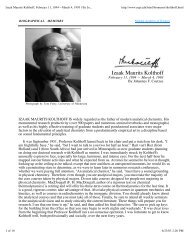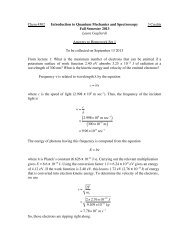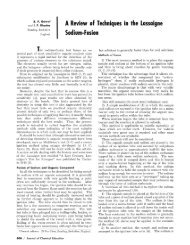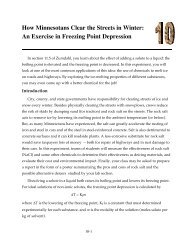ChemNews - Department of Chemistry - University of Minnesota
ChemNews - Department of Chemistry - University of Minnesota
ChemNews - Department of Chemistry - University of Minnesota
Create successful ePaper yourself
Turn your PDF publications into a flip-book with our unique Google optimized e-Paper software.
Force fields for complex reactionsRecent research from the group <strong>of</strong> Pr<strong>of</strong>essor Don TruhlarCombined quantum mechanical and molecular mechanical (QM/MM) methods have provided powerful means forstudying chemical reactions in condensed phases such as liquids, enzymes, and solids. In these approaches, the reactioncenter is described quantum mechanically, while the surroundings are treated by using a molecular mechanicsforce field. However, the high computational cost <strong>of</strong> quantum mechanical (QM) calculations prevents carryingout QM/MM molecular dynamics simulationswith reliable accuracy and adequate sampling.In order to reduce the computationalcost <strong>of</strong> the QM calculation,postdoctoral research associateMasahiro Higashi and Regents Pr<strong>of</strong>essor DonaldG. Truhlar* have developed a new method calledelectrostatically embedded multi-configurationmolecular mechanics (EE-MCMM) for generatingglobal potential energy surfaces (PESs) in thepresence <strong>of</strong> an electrostatic potential. MCMMdescribes the global PES <strong>of</strong> a condensed-phasereaction with electronic structure information, inparticular energies and partial chargedistributions, obtained in the gas phase at selectedgeometries. Because this new method is efficient,high-level QM calculations can be usedin QM/MM methods. The result is a key step towardstudying chemical reactions in condensedphases with high accuracy.Methyl anion dethroned as themost basic speciesRecent research from the group <strong>of</strong> Pr<strong>of</strong>essor StevenKassAfter decades as the champion <strong>of</strong> proton acceptors, the methyl anionis finally playing second fiddle to the gas-phase lithium monoxideanion. In a joint effort between <strong>University</strong> <strong>of</strong> <strong>Minnesota</strong> researchersZhixin Tian and Pr<strong>of</strong>. Steven R. Kass and collaborators at the <strong>University</strong><strong>of</strong> Sydney, the LiO- species was prepared and its acid-base propertieswere measured to verify calculations that predicted its chemicalprowess. Their work was reported in The Proceedings <strong>of</strong> the NationalAcademy <strong>of</strong> Sciences (Proc. Natl. Acad. Sci. USA 2008, 105, 7647) andhighlighted in Chemical and Engineering News (C&EN June 9, 2008).Page 23



